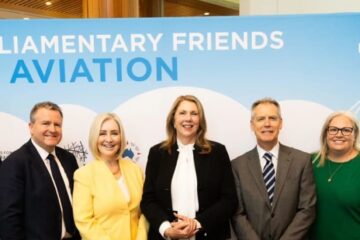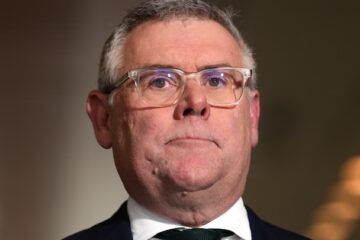BFPCA Media Statement, 15 August 2024
- No meaningful action since July 2020 despite worsening noise pollution.
- “Engagement Theatre” by Airservices and Brisbane Airport Corporation (BAC) prolongs community suffering.
- BFPCA rejects noise sharing as the only “solution” being considered, advocating instead for genuine best practice noise abatement measures.
- London City Airport exemplifies what is possible when genuine efforts are made to mitigate aircraft noise.
Brisbane, 15 August 2024 – Brisbane Flight Path Community Alliance (BFPCA) expresses its deep disappointment with Airservices Australia’s latest call for community feedback on new Brisbane flight path options. This move, part of their so-called Noise Action Plan (dubbed by the community the “Noise Inaction Plan”), is yet another instance of what we have long identified as “engagement theatre”—a tactic designed to give the illusion of action while continuing to ignore the real concerns of Brisbane residents.
Since the launch of Brisbane Airport’s new flight path architecture in July 2020, residents have endured increasing levels of aircraft noise with no meaningful interventions from Airservices or Brisbane Airport Corporation (BAC). Despite numerous consultations, workshops, and forums, the situation has only deteriorated, with community voices consistently sidelined.
One of the aviation industry’s most effective tactics to delay change and maximise profits at the expense of community well-being is “engagement theatre.” BFPCA and Brisbane residents are repeatedly asked to invest their time and energy into complaints, submissions, and consultations that lead nowhere. The string of ineffective initiatives—from BACACG to BAPAF, the TRAX review, PIR workshops, AAB, and now even more consultation on mere “concepts”—has done nothing to alleviate the noise burden on Greater Brisbane’s communities suffering daily in more than 220 suburbs.
Adding insult to injury, Airservices and BAC are now pushing a concept known as “noise sharing”—a strategy that promises to spread the burden of aircraft noise across even more neighbourhoods. BFPCA firmly rejects this as the only go-to “solution.” Noise sharing is not a genuine solution but a method to expand capacity without addressing the root causes of excessive noise pollution. It may offer temporary relief to some communities but ultimately leads to greater overall noise exposure due to BAC’s aggressive growth aspirations towards 110 flights an hour.
BFPCA’s position is clear: noise sharing should only be considered after all other avenues for genuine noise reduction have been exhausted. This includes: implementing a curfew, capping flights, and prioritising over-water operations—measures already in place at other Australian airports like Sydney, Adelaide, Melbourne/Essendon, and the Gold Coast. The first priority must be noise avoidance and minimisation at the source, not simply redistributing the problem.
BFPCA has been blowing the whistle on these tactics since our inception. Our submission to the ANO in 2021, alongside countless newsletters and social media posts, have highlighted the manipulative strategies employed by BAC and Airservices. A particularly telling analysis is Rachelle Verdel’s research, which unpacks the social engineering tactics being employed by the aviation industry. Modeled on Schiphol Airport’s approach, the tactics employed here in Brisbane aim to control and suppress community resistance by creating pseudo-participatory forums such as AAB that promise reform but deliver nothing.
Verdel (2021) argues that Schiphol’s methods involve “inclusionary control”—the creation of bureaucratic forums that give the appearance of inclusivity while systematically undermining any real influence on decision-making. These tactics have been mirrored in Brisbane, where BAC and Airservices continue to exploit community goodwill and patience.
However, change is possible. London City Airport (LCY) provides an example of best practice in noise management. LCY has implemented a comprehensive Noise Action Plan that serves as a benchmark for best practices in noise management. Key measures include:
- Strict Aircraft Movement Limits: LCY enforces strict limits on aircraft movements, including specific caps on daily and annual operations, particularly during weekends and public holidays. Night-time operations are heavily restricted, with full closure during certain hours.
- Enhanced Sound Insulation: LCY offers a three-tier sound insulation scheme for residential properties and public buildings within specified noise contours. This includes high-performance double glazing and acoustic ventilation, with regular inspections and updates every ten years.
- Steep Approach and Departure Angles: Aircraft approaching LCY use a steep 5.5-degree glide slope, which keeps planes higher for longer, thereby reducing noise impact on surrounding communities.
- Incentives and Penalties Scheme: LCY operates the most stringent noise penalty scheme in the UK, charging airlines for noise exceedances and rewarding quieter operations. The funds collected from penalties are reinvested into community projects.
- Independent Noise Monitoring: LCY conducts annual noise contour assessments using real flight data, ensuring compliance with noise limits and informing eligibility for noise mitigation measures.
- Comprehensive Complaint Management: LCY operates an efficient complaint management system that ensures all noise-related concerns are promptly addressed, with regular reporting to the London City Airport Consultative Committee (LCACC).
- Transparent Community Engagement: LCY engages in genuine community consultation, supported by a robust legal framework that prioritizes the health and well-being of residents. The airport’s performance and compliance are transparently monitored and reported.
These measures highlight what is possible when an airport is committed to balancing operational needs with community protection, setting a standard that Brisbane Airport should aspire to achieve.
Quotes Attributable to Prof. Marcus Foth, Chairperson of BFPCA:
- “Noise sharing has never been a goal of BFPCA as it’s a Trojan horse to invite thousands more planes over thousands more people.”
- “Noise sharing is not a solution—it’s a smokescreen. It simply spreads the burden of aircraft noise across more suburbs without addressing the root causes. We need genuine noise abatement measures, not more empty gestures that ultimately serve the interests of the aviation industry at the expense of community health and well-being.”
- “The noise sharing goals of Airservices and BAC prop up the airport’s dreams of turning Brisbane into an Aerotropolis—not a city with an airport but an airport city. They sacrifice nothing and unfairly push all cost of noise pollution like health harms and property devaluation onto the families of greater Brisbane.”
- “Brisbane communities have been suffering under increasing aircraft noise for over four years, with no meaningful relief in sight. Airservices’ latest call for feedback is nothing more than engagement theatre—a tactic designed to placate residents while ignoring their legitimate concerns.”
- “We have seen this pattern of manipulation before, most notably in the Schiphol Airport playbook, which Airservices Australia seem to have adopted to suppress community concerns and opposition. It’s time for real change, not more empty promises.”
- “London City Airport shows us what is possible when there is a genuine commitment to protecting communities. It’s time for Brisbane Airport and Airservices to step up and follow suit or continue to be exposed for their failure to act.”
- “It’s time for a reasonable curfew and flight cap at Brisbane airport so all communities they are harming get relief, just like the community protections in place in Sydney.”
About BFPCA
With the launch of Brisbane Airport’s New Parallel Runway on 12 July 2020 came a new airspace design and flight paths that concentrate aircraft noise over densely populated residential areas.
Brisbane Airport and Airservices Australia sold this project to Brisbane communities suggesting the New Parallel Runway will enable them to prioritise “over water” operations that direct planes away from residential areas. The CEO Gert-Jan de Graaff is on the record saying, “the net effect of aircraft flying over the city will decrease.”
Brisbane families and communities are suffering from excessive noise pollution and associated health and related impacts from Brisbane Airport’s new flight paths launched in July 2020. The Aircraft Noise Ombudsman report, the Brisbane Airport PIR Advisory Forum (BAPAF) and flight path design consultants TRAX International have all confirmed that Brisbane communities were misled using flawed noise modelling, deceiving community engagement, and offered inadequate noise abatements.
Brisbane Flight Path Community Alliance (BFPCA) came together in 2020 to fight back on behalf of all Brisbane families and communities experiencing this noise pollution.
For more background information, visit: https://bfpca.org.au/


